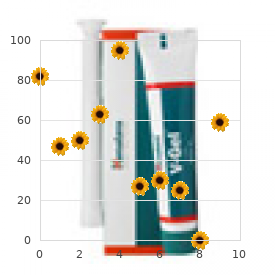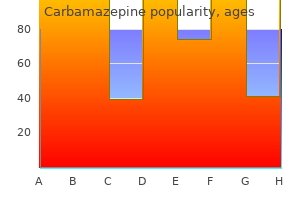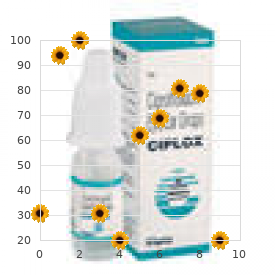





|
STUDENT DIGITAL NEWSLETTER ALAGAPPA INSTITUTIONS |

|
"Carbamazepine 100mg without prescription, spasms jaw".
J. Ali, M.B.A., M.B.B.S., M.H.S.
Deputy Director, University of Nevada, Las Vegas School of Medicine
More recently muscle relaxant end of life buy carbamazepine 200 mg low cost, receptor editing has been shown unambiguously in mice bearing transgenes for autoantibody heavy and light chains that have been placed within the immunoglobulin loci by the homologous recombination method explained in Appendix I muscle relaxant histamine release order 400 mg carbamazepine amex, Section A-47 quercetin muscle relaxant discount carbamazepine 100 mg with amex. The transgene imitates a primary gene rearrangement and is surrounded by unused endogenous gene segments spasms ms carbamazepine 100mg. In mice that express the antigen recognized by the transgene-encoded receptor, the few mature B cells that emerge into the periphery have used these surrounding gene segments for further rearrangements that replace the autoreactive light-chain transgene with a nonautoreactive rearranged gene. At a light-chain locus, the multiplicity of V and J segments allows the unused V and J gene segments to be selected for multiple further rearrangements (see. There are no available D segments at a rearranged heavy-chain locus, so a new rearrangement cannot simply occur by the normal mechanism and at the same time remove the preexisting one. This has been observed in some B-cell tumors, but whether it occurs during normal B-cell development in response to signals from autoreactive B-cell receptors is not known. It was originally thought that successful production of a heavy chain and a light chain caused the almost instantaneous shut down of further light-chain locus rearrangement and that this ensured both allelic and isotypic exclusion (see Section 7-10). The unexpected ability of self-reactive B cells to continue to rearrange their light-chain genes, even after having made a productive rearrangement, has raised questions about this supposed mechanism of allelic exclusion. Furthermore, any additional productive rearrangement that did still occur would not necessarily breach allelic exclusion: if it occurred on the same chromosome it would eliminate the existing productive rearrangement, while if it occurred on the other chromosome it would be nonproductive in two out of three cases. Consistent with this idea, it appears that allelic exclusion is not absolute, since there are rare B cells that express two light chains. We have so far discussed the fate of newly formed B cells that undergo multivalent cross-linking of their sIgM. Those immature B cells that encounter more weakly cross-linking self antigens of low valence, such as small soluble proteins, respond differently. In this situation, the self-reactive B cells tend to be inactivated and enter a state of permanent unresponsiveness, or anergy, but do not immediately die (see. Anergic B cells cannot be activated by their specific antigen even with help from antigen-specific T cells (see Section 1-15). The anergic cells retain their IgM within the cell and transport little to the surface. It seems that signal transduction is blocked at a step before the phosphorylation of the Ig and Ig chains (see Section 6-6), although the exact step is not yet known. The signaling defect may involve the inability of B-cell receptor molecules on tolerant B cells to enter regions of the cell in which important other signaling molecules normally segregate in order to transmit a complete signal subsequent to antigen binding. Furthermore, cells that have received an anergizing signal may upregulate molecules that inhibit signaling and transcription. Anergic B cells are not only impaired in signal transduction and expression of sIgM. Their migration within peripheral lymphoid organs is altered and their life-span and ability to compete with immunocompetent B cells are compromised. In normal circumstances, in which B cells binding soluble self antigen are in a minority, anergic B cells are detained in the T-cell areas of the peripheral lymphoid tissue and are excluded from lymphoid follicles. As anergic B cells cannot be activated by T cells, and T-cell help will in any case not be available for self antigens, to which the T cells will be tolerant, these self-reactive B cells will not be activated to secrete antibody. Instead they die relatively soon, presumably because they fail to get survival signals from T cells, thus ensuring that the long-lived pool of peripheral B cells is purged of potentially self-reactive cells. It is clear that some B cells with a weak but definite affinity for a self antigen, mature as if they were not self-reactive at all. Such B cells do not respond to the presence of their self-antigen because it interacts so weakly with the receptor that little if any, intracellular signal is generated when it binds. Alternatively, some self-reactive B cells may not encounter their antigen at this stage because it is not accessible to B cells developing in the bone marrow and spleen. The maturation of these B cells reflects a balance that the immune system strikes between purging all self-reactivity and maintaining the ability to respond to pathogens. If elimination of self-reactive cells were too efficient, the receptor repertoire might become too limited and thus not be able to recognize a wide variety of pathogens. Some autoimmune disease might be the price of this balance, as it is very likely that these low-affinity self-reactive lymphocytes can be activated and cause disease under certain circumstances. Normally, however, ignorant B cells will be held in check by a lack of T-cell help, the continued inaccessibility of the self antigen, or the tolerance that can be induced in mature B cells, as described in the next section. It is likely that most self-reactive B cells will encounter their antigens while still immature, as many self antigens circulate through tissues in soluble form or are expressed by many different cell types, including those in the bone marrow.


Rajat Ray National Drug Dependence Treatment Centre spasms icd-9 order 200 mg carbamazepine with amex, All India Institute of Medical Sciences muscle relaxant nerve stimulator generic 200mg carbamazepine amex, New Delhi muscle relaxant elderly purchase carbamazepine 400mg, India 9 spasms urethra discount carbamazepine 400 mg on line. Sarrafzadegan Nizal Isfahan University of Medical Sciences in Iran and School of Population and Public Health in the University of British Columbia in Canada 10. Her area of study was the proposed relationship between social relationships, metabolic disease, and post-traumatic stress disorder. As a member of the systematic review group she will be a technical resource and, therefore, will not participate in any of the closed sessions (voting or drafting final recommendations). Background question: Association of physical health conditions with severe mental disorders A. The comorbidity rates of all substance use disorders combined were even higher, with 48%, 40%, and 29% for schizophrenia, bipolar disorder, and depression, respectively (Jшrgensen, Nordentoft and Hjorthшj, 2018). The use of antipsychotic medications has been associated with obesity, insulin resistance, diabetes, myocardial infarctions, atrial fibrillation, stroke, and death (Lieberman et al. Further, one country-wide study in Taiwan revealed that persons with schizophrenia have a 1. Patients with bipolar disorder and schizophrenia have been shown to have higher rates of mortality in both high and low-income settings (Tsuang, Woolson and Fleming, 1980) (Capasso et al. Moreover, for schizophrenia in particular, the mortality gap appears to be widening over time (Saha, Chant and McGrath, 2007). Report of the InterAgency and Expert Group on Sustainable Development Goal Indicators. After the searches were run using the search strategies listed on the pages below, titles and abstracts of all results were screened in Endnote; subsequently the full texts of those papers were reviewed that could not be excluded based on the title/abstract review. No further restrictions were employed, for example in terms of language (apart from the publication date, as mentioned above). Physical health medicines were limited in scope to those used on a routine basis, rather than emergently. Pharmacological interventions recommended in the forthcoming guidelines were also included. These will be expanded to include a wider range of medicines which may be used in different settings based on availability and costs. Updated every two years, this list in many cases has been used as a gold standard for national health systems and nongovernmental organization. Priority medications are selected based on efficacy, safety, and cost-effectiveness. Lexi-Interact was chosen as it is commonly used in clinical practice and scored well on accuracy and comprehensiveness in a recent review comparing 5 drug-drug interaction engines5. Severity of drug-drug interactions (minor, moderate, major)) were reported in the LexiInteract database and have reported here. Signs of serotonin syndrome include confusion, neuromuscular excitability, and dysautonomia. Elevated risk of side effects and toxicity of methadone including urinary retention and constipation [via anticholinergic activity]. Elevated risk of side effects and toxicity of buprenorphine including urinary retention and constipation [via anticholinergic activity]. If using, monitor for reduced efficacy of amlodipine and adjust doses accordingly. If using, monitor for clinical efficacy of haloperidol and adjust dosing as needed. If using, monitor for efficacy clinically and via clozapine levels and adjust dosing as needed. Signs of serotonin syndrome include confusion, neuromuscular excitability (ex: myoclonus and hyperreflexia), and dysautonomia (ex: flushing, sweating, diarrhoea, high blood pressure and heart rate, and fever). Signs of neuroleptic malignant syndrome include confusion, muscle rigidity, and dysautonomia (ex: high fever, heart rate, or labile blood pressures).

Thus muscle relaxant pregnancy buy 200mg carbamazepine free shipping, there seems to be no systematic association between enzymatic activity and allergenicity muscle relaxant anxiety 100 mg carbamazepine fast delivery. The enzymatic activity of some allergens enables penetration of epithelial barriers spasms early pregnancy cheap 400mg carbamazepine mastercard. The epithelial barrier of the airways is formed by tight junctions between the epithelial cells muscle relaxants yellow buy cheap carbamazepine 100 mg line. It cleaves occludin, a protein that helps maintain the tight junctions, and thus destroys the barrier function of the epithelium. Fecal antigens can then pass through and be taken up by dendritic cells in subepithelial tissue. Der p 1 may then bind directly to specific IgE on the resident mast cells, triggering mast-cell activation. IgE antibodies are important in host defense against parasitic infections and this defense system is distributed anatomically mainly at the sites of entry of parasites under the skin, under the epithelial surfaces of the airways (the mucosal-associated lymphoid tissues), and in the submucosa of the gut (the gut-associated lymphoid tissues). One possibility is that they express a particular set of cytokines and co-stimulatory molecules yet to be characterized. The IgE response, once initiated, can be further amplified by basophils, mast cells, and eosinophils, which can also drive IgE production. The interaction between these specialized granulocytes and B cells can occur at the site of the allergic reaction, as B cells are observed to form germinal centers at inflammatory foci. Blocking this amplification process is a goal of therapy, as allergic reactions can otherwise become self sustaining. IgE secreted by plasma cells binds to the high-affinity IgE receptor on mast cells (illustrated here), basophils, and activated eosinophils. These interactions can occur in vivo at the site of allergen-triggered inflammation, for example in bronchial-associated lymphoid tissue. Genetic factors contribute to the development of IgE-mediated allergy, but environmental factors may also be important. As many as 40% of people in Western populations show an exaggerated tendency to mount IgE responses to a wide variety of common environmental allergens. Atopic individuals have higher total levels of IgE in the circulation and higher levels of eosinophils than their normal counterparts. Studies of atopic families have identified regions on chromosomes 11q and 5q that appear to be important in determining atopy; candidate genes that could affect IgE responses are present in these regions. These cytokines are important in IgE isotype switching, eosinophil survival, and mast-cell proliferation. It is too early to know how important these different polymorphisms are in the complex genetics of atopy. There is evidence that a state of atopy, and the associated susceptibility to asthma, rhinitis, and eczema, can be determined by different genes in different populations. Genetic associations found in one group of patients have frequently not been confirmed in patients of different ethnic origins. There are also likely to be genes that affect only particular aspects of allergic disease. For example, in asthma there is evidence for different genes affecting at least three aspects of the disease phenotype IgE production, the inflammatory response, and clinical responses to particular types of treatment. Some of the best-characterized genetic polymorphisms of candidate genes associated with asthma are shown in. The prevalence of atopic allergy, and of asthma in particular, is increasing in economically advanced regions of the world, an observation that is best explained by environmental factors. The four main candidate environmental factors are changes in exposure to infectious diseases in early childhood, environmental pollution, allergen levels, and dietary changes. Alterations in exposure to microbial pathogens is the most plausible explanation at present for the increase in atopic allergy. Atopy is negatively associated with a history of infection with measles or hepatitis A virus, and with positive tuberculin skin tests (suggesting prior exposure and immune response to Mycobacterium tuberculosis). It might be expected that exposure to environmental pollution would worsen the expression of atopy and asthma. Children from the city of Halle in the former East Germany, which has severe air pollution, had a lower prevalence of atopy and asthma than an ethnically matched population from Munich, exposed to much cleaner air. The children from Halle had a higher overall prevalence of respiratory disease than their counterparts from Munich, but this was predominantly not allergic in origin.

